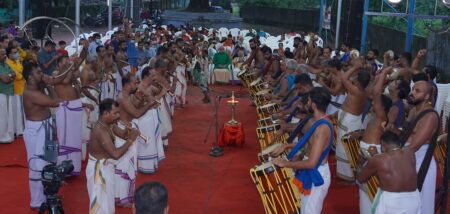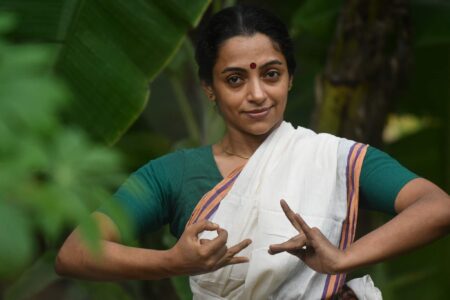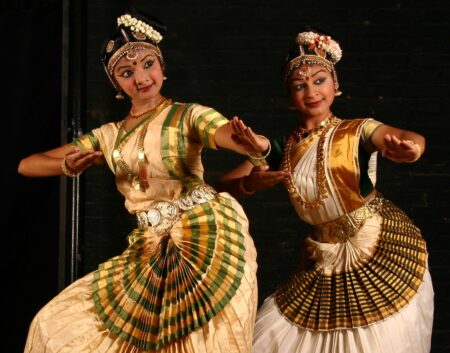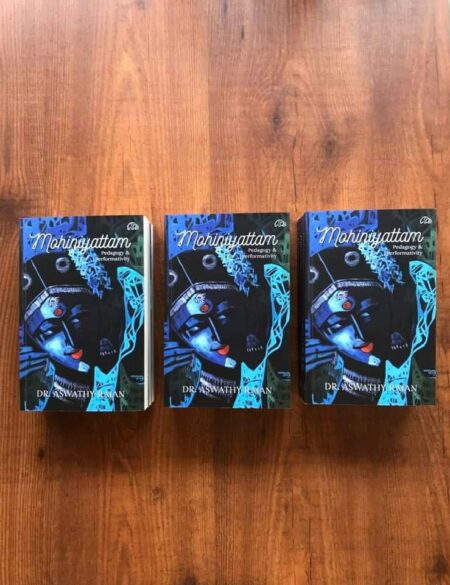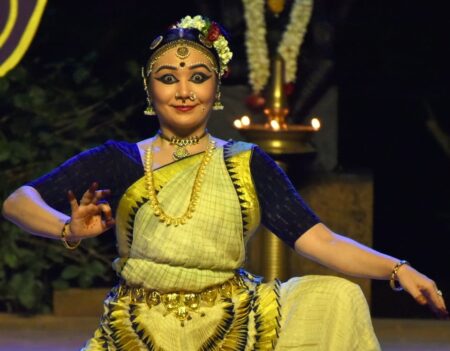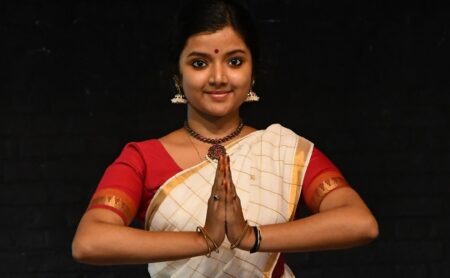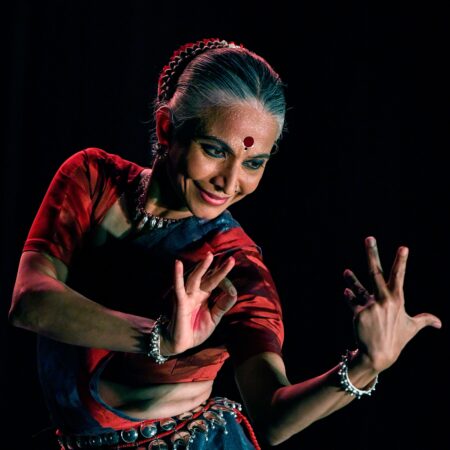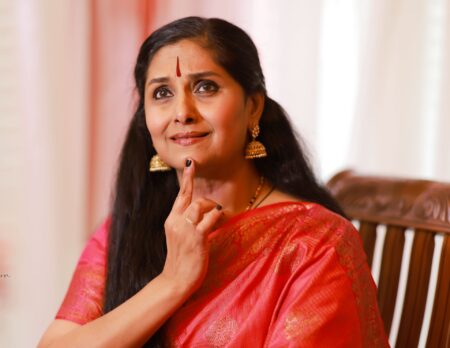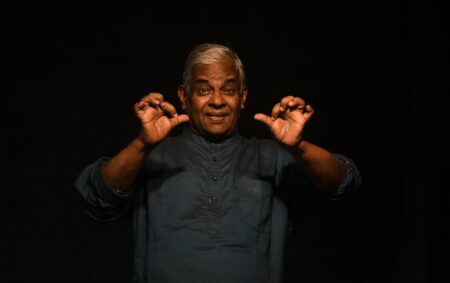Chalakkudy Maholsavam featured Panchari melam, Kathakali, Sopana Sangeetham, Carnatic music, Mohiniyattam and Ottanthullal among others.
Browsing: Dance
Kapila Venu in conversation with India Art Review’s Aroma Warsi. In a candid and insightful conversation, the young practitioner of Kerala’s ancient theatre of Sanskrit plays, opens up on the art, politics and heritage of Koodiyattam and how she’s evolved as a student and exponent of the complex, enchanting theatre form. Tune in.
The rooster takes on various meanings in rural India. Its role in Mohiniyattam
is noteworthy
In the book, Mohiniyattam, Pedagogy and Performativity, Aswathy Rajan argues the dance is still under a feudal halo.
Mandalas are one of the important sources of Mohiniyattam’s creative semiotics
The divine salutation is the starting point not just in dance, but also in humility and gratitude.
The skill and technique of the various dance forms are imbued with memories of past times, specific history and cultural ethos, says Odissi dancer and teacher Bijayini Satpathy.
Sunanda Nair’s life around dance came to a standstill several times. She was able to find her feet back to it, every single time.
Derived from Kathakali, Kerala Natanam was developed as an art form that would appeal to the masses.
G Venu’s latest book ‘Arangilum, Munnilum Pinnilum’ is a deep exploration of the abhinaya guru’s artistic and instructional journey.

